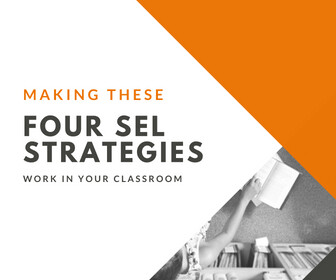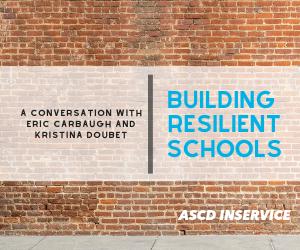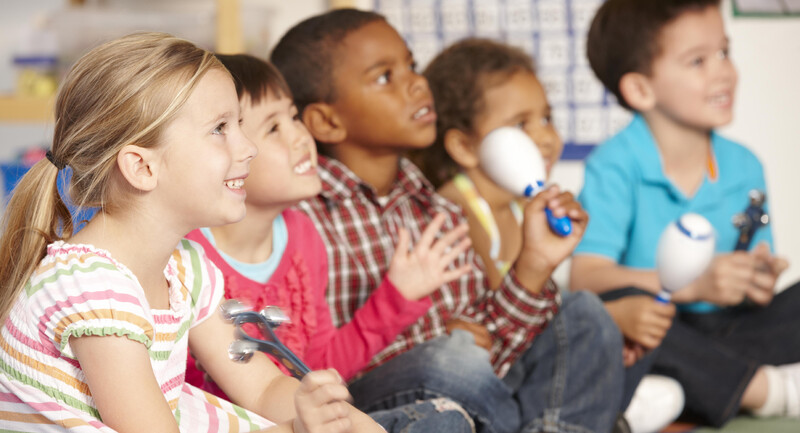Recently there’s been a rise of interest in the need to include Social Emotional Learning (SEL) into the curriculum. This is no surprise due to the recent attention focused on the school environment. One of the takeaways from these discussions, according to The Collaborative for Academic, Social, and Emotional Learning (CASEL) is that we can explicitly stimulate students’ social and emotional abilities, and the result is not only beneficial for students’ emotional health but also their academic achievement. (Durlak et. al., 2011)
We don’t need to add an SEL class or include a new curriculum piece to an already over-filled teacher’s plate. The good news is you probably are already implementing SEL strategies in your daily teaching practices and also when you are casually around your students.
First, it’s important to understand what SEL entails. CASEL has categorized five proficiencies that encompass SEL: self-awareness, self- management, social awareness, relationship skills, and responsible decision-making. (CASEL, 2015)
Here are four strategies that work well together (from the five proficiencies of SEL) you could already be doing or easily start.
1. Model and cultivate self-awareness
As a teacher, you are hyper-aware of your students from the minute they step foot in your classroom. Even if you and all of your students are at peak performance (insert LOL here), you know that they and you need a transition activity to get all participants focused and ready to learn.
This is the time you have them take out their personal journals. In fact, you do it with them. You unveil a prompt on the board and your timer is ready. This prompt is a self-reflection of their own ideas, feelings, and/or goals. For example:
Today, my goal is to _________in this class. I am struggling with ______ at the moment, and I know I could do better at________. Now, write about your goal today and three ways in how you could accomplish this.
You are modeling this as well because after this time (maybe 5 minutes) is up, you share with them your own thoughts. In being real with them, you are showing your students your human side. They need to see that being more self-aware allows one to make corrections to improve and grow from weak areas. Journaling is just one tool for this. These journals can also be used with content. If the students are reading a fiction piece, they can connect with the character with his/her own experiences.
2. Grow student responsibility (to help students self-manage)
We want our students to manage themselves. After the class has completed, it is a perfect time to take out those journals for reflection on the goal/s of the day and then to reflect on his/her learning. For example, what was challenging today? What worked in your studies today and what was more difficult? How did you process the answer to a problem? These reflections on learning will encourage the student to make adjustments to his/her own habits. The serendipity to all of this is students can own their learning and become more successful in the process.
3. Model kindness to enhance relationship skills
This sounds simplistic and obvious, but by having the SEL lens in the classroom, our language and behavior should be warm, encouraging and supportive. This will only help students be more relational inside and outside the classroom. For example, when we are walking around the room, we can point out positive behavior (vs focusing on the behavior problems). “Juan, I love how you are using your quiet voice to work with Sara.” This is much more effective than pointing out the loud duet next to them.
Mark Twain said it best, “Kindness is a language which the deaf can hear and the blind can see.”
As teachers, we must become self- aware of the importance of our word choice, the tone of voice, and body language and how they can quickly alter an atmosphere into a positive or negative one. Instead of “Can you stop tapping your pencil, Billy?”, we can say, “Billy, show me what a great listener you are!” This self-fulfilling prophecy allows the student to make a change without feeling belittled or embarrassed. As we model our positive language, we can remind students that we expect this in our classroom. “We are a kind classroom.”
4. Utilize cooperative learning strategies to enhance social awareness
One of the best uses of cooperative learning is to teach taking turns and sharing responsibility. Talking Pencils is one approach that works wonders for discussion. A question is posed and each one must share an answer in a group of four. When one wants to share an opinion, he/she places his/her pencil in the center of the four-person group. Now, this is where we must model how to speak to each other. We can provide sentence frames (posted on the board) to aid in the discussion. “My answer is ______ because of ______.” Once that student speaks, the next student places his/her pencil in the middle but then must say something like this: “Thank you for sharing, (Sal); I like your idea but have you thought of this?” Or, “I like your answer. I disagree, however, and this is why.” These sentence frames teach students how to discuss topics in a kind way, allowing for differences in opinion.
We must then walk the room pointing out positive talk. “Bob, I love how you disagreed with kind words and then gave your opinion in an understanding, helpful way.” Again, we are modeling, guiding, and expecting our students to rise to our high standards.
Each of these four SEL strategies is seamless, but they all must first start from us. We the teachers have the power in our hands to make or break our classroom in how we want our students to feel, how we want our classroom to run, and what kind of students we want to produce.
Dr. Stephanie Knight is an experienced 7th and 8th grade English language arts educator. She taught in Title One schools for eight years—helping them grow from underperforming to excelling—and then in an independent school for four years. Knight is now is part of Grand Canyon University’s adjunct faculty where she teaches graduate-level education and reading courses.








